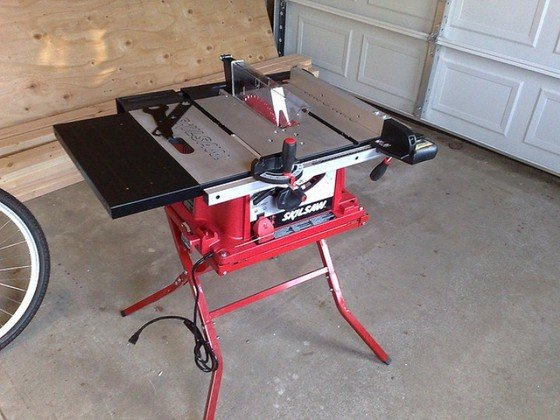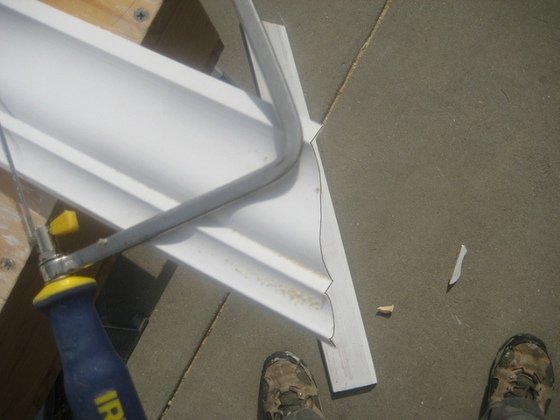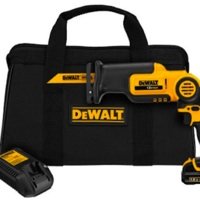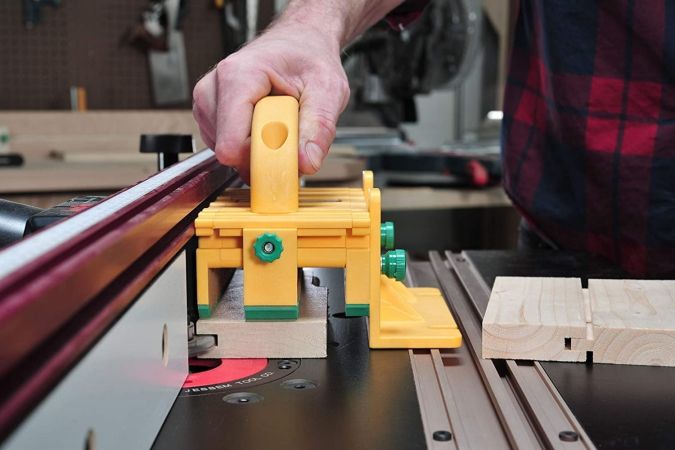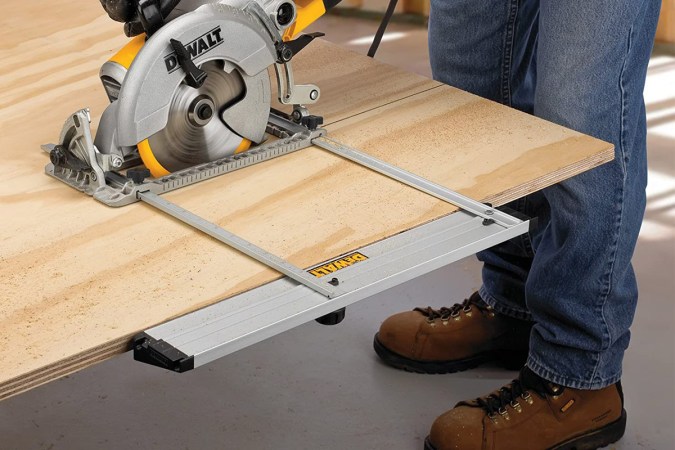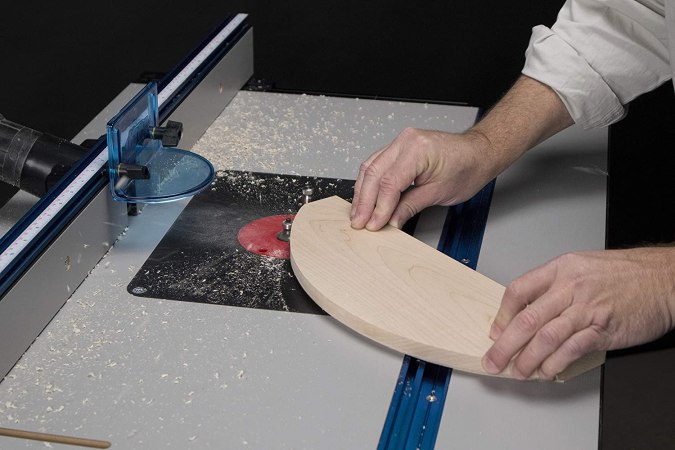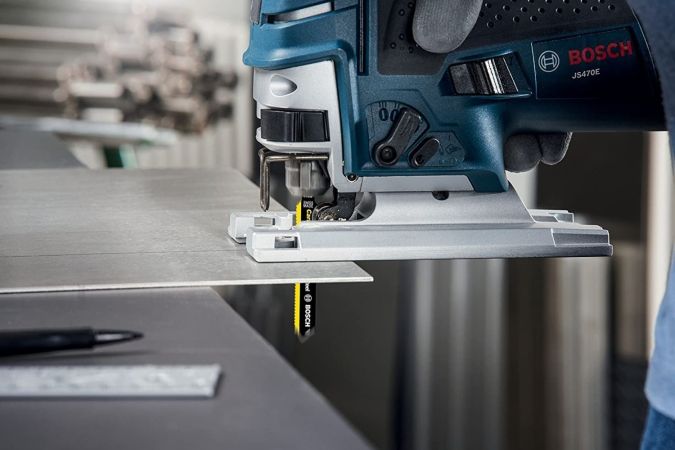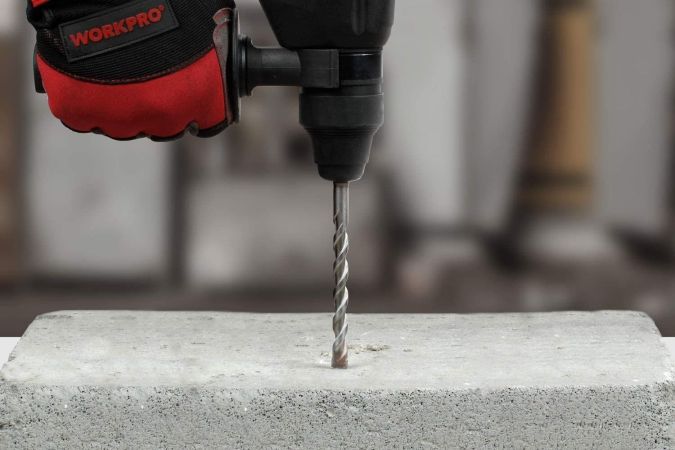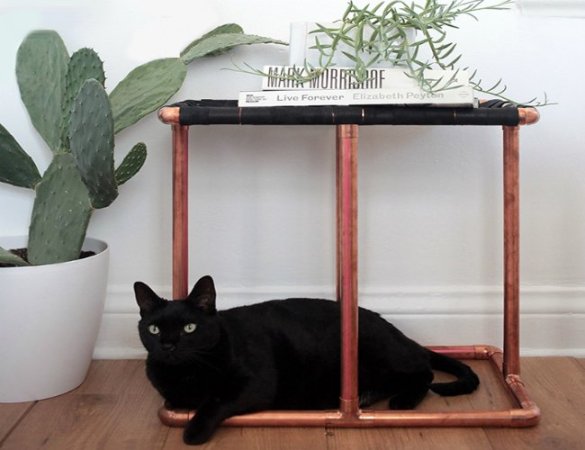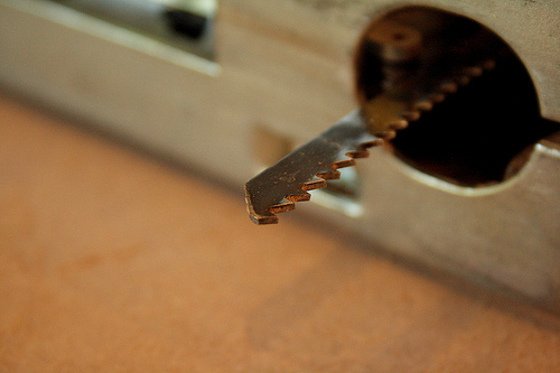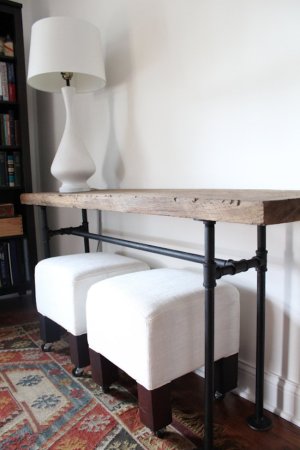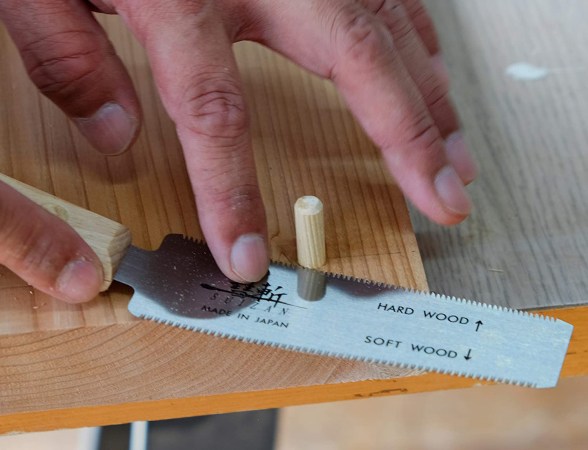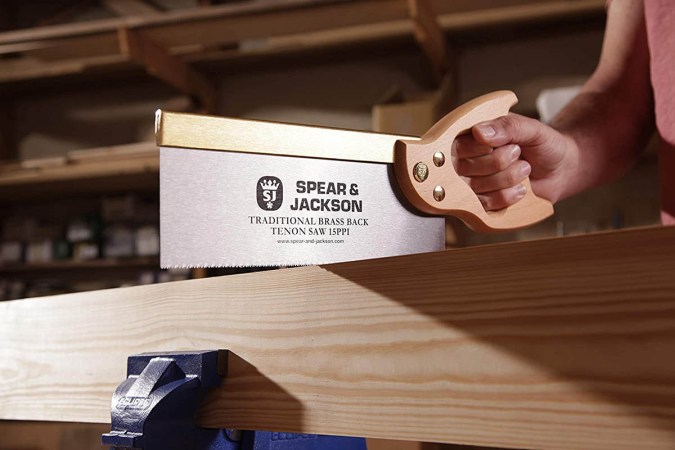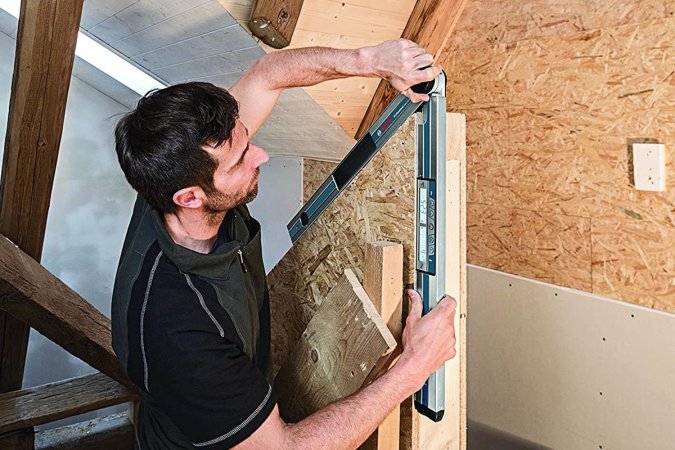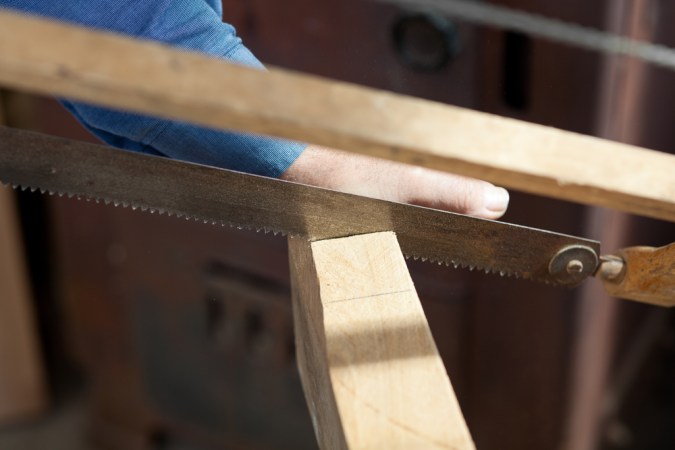We may earn revenue from the products available on this page and participate in affiliate programs. Learn More ›
One of the crowning achievements of many do-it-yourselfers is to purchase a stationary bench power tool. Unless you’re fortunate enough to have the funds and the available space to have both, you must choose between a table saw or a radial arm saw.
Table Saws
Table saws are an extremely versatile tool that will enable you to accurately perform just about all the basic cuts needed in woodworking. With a table saw, the blade remains stationary. Workpieces are pushed through the blade, giving you exceptional cutting accuracy. A large selection of blades and dadoes are available. If you plan to make a lot of joint cuts, common in furniture making and other structural woodworking projects, the table saw will give you the best results. Because you move the workpiece through the saw, a table saw will allow you to cut large sheets of paneling, plywood, and wallboard.
Two types of blades can be mounted on the table saw for specialty work, the dado and the molding cutter. Both require special setups and, in most cases, additional equipment. A larger table insert will be necessary to give the wider cutting surfaces of these blades adequate clearance where they break the plane of the tabletop.
You’ll also need to protect both the blades and your fence by attaching a fence shield to the fence. A shop-made fence shield is easily made of scrap stock.
Dado Blades. The dado cuts rectangular recesses in wood. There are two types of dadoes. The less expensive (and somewhat less precise) variety is called an adjustable or “wobble” dado. It is essentially a heavy-duty sawblade with a hub mechanism that allows it to be adjusted so that it spins at angles slightly less than perpendicular to the arbor. The resulting wobble of the saw-blade produces a cut that is wider than the saw kerf.
For more accurate work, a dado set or dado head is used. It consists of two outer circular blades, called grooving saws, sandwiching inner blades (the chippers). The outer blades cut the sides of the groove or rabbet while the chippers clear the center. Typically, the grooving saws are an eighth of an inch thick; chippers are usually sold in sixteenth, eighth, and quarter-inch thicknesses. A dado set will usually come with two grooving saws and several chippers. For fine adjustments of the width of a dado cut, shim washers can be inserted between the blades.
Dado sets are sold in diameters of six and eight inches. For most purposes, a six-inch set is quite adequate (and a lot cheaper).
Both the wobble dado and dado head are mounted on the arbor like a standard circular sawblade. When mounting a dado head, stagger the chippers; the teeth on adjacent blades shouldn’t bind. Don’t forget the alternate table insert (the plate that covers the mouth in the tabletop through which the sawblade protrudes) and to protect the fence with the fence shield.
To run the dado head, allow the saw to reach full speed. Once it does, present the work-piece gently: The saw will require more time to cut a groove or rabbet because the sheer amount of waste being removed is greater than on a simple rip or crosscut. Use a push stick and, as always, wear your safety glasses or goggles.
The Molding Cutter. This device cuts profiles in wooden stock, profiles that can vary from very simple to quite complex. The device consists of a steel cutterhead that is fastened like any other circular saw would be to the saw arbor of your table saw or radial-arm saw. The cutterhead in most molding cutters holds three identical blades with contoured profiles; set screws hold the blades in place. Some models use as few as one or two, but blade chatter is more likely with fewer blades, which make for a less well-balanced head.
Radial Arm Saws
Radial arm saws can also make most common woodworking cuts. It is ideal for making rip and crosscuts. The blade is positioned above the table and is moved through the workpiece. This makes it more convenient to make cuts in long workpieces. Rather than moving a large 2 x 12 board through the saw, as you would need to do with a table saw, you can keep the piece stationary and move the radial arm saw blade right through for your cut.
Radial saws are easier to maintain because the overhead blade can be aligned very quickly. If space is limited, a radial saw can be positioned against the wall, whereas a table saw must be located away from the wall to allow space for larger workpieces to be moved across the blade.
Saw Safety
Rules regarding saw safety are many – but there is, of course, very good reason for that. These tools can make carelessness dangerous indeed. So take these guidelines seriously.
Unplug the tool whenever a blade is being changed, repairs are to be made, or the guards are removed.
Always use the guards. Adjust the guards – whether they are shields, splitters, or anti-kickback fingers to suit the setup.
Don’t make even minor adjustments while the saw is running. Turn it off, tune your machine
then start it again. When you have the guards off for blade changes or any other reason, unplug the saw.
Never use a dull sawblade. If the blade tends to pinch or bind or burns the wood, it’s dull and should be sharpened or replaced.
Feed the stock into the teeth of the spinning blade. If you try to cut in reverse (working from the rear of a table saw, for example, when trying to make a stopped groove), the stock is likely to be turned into a dangerous missile.
Keep your fingers in the clear at all times, never closer than four or five inches from any blade.
Wear your safety glasses, goggles, or face shield. If the saw is loud, protect your ears, too.

